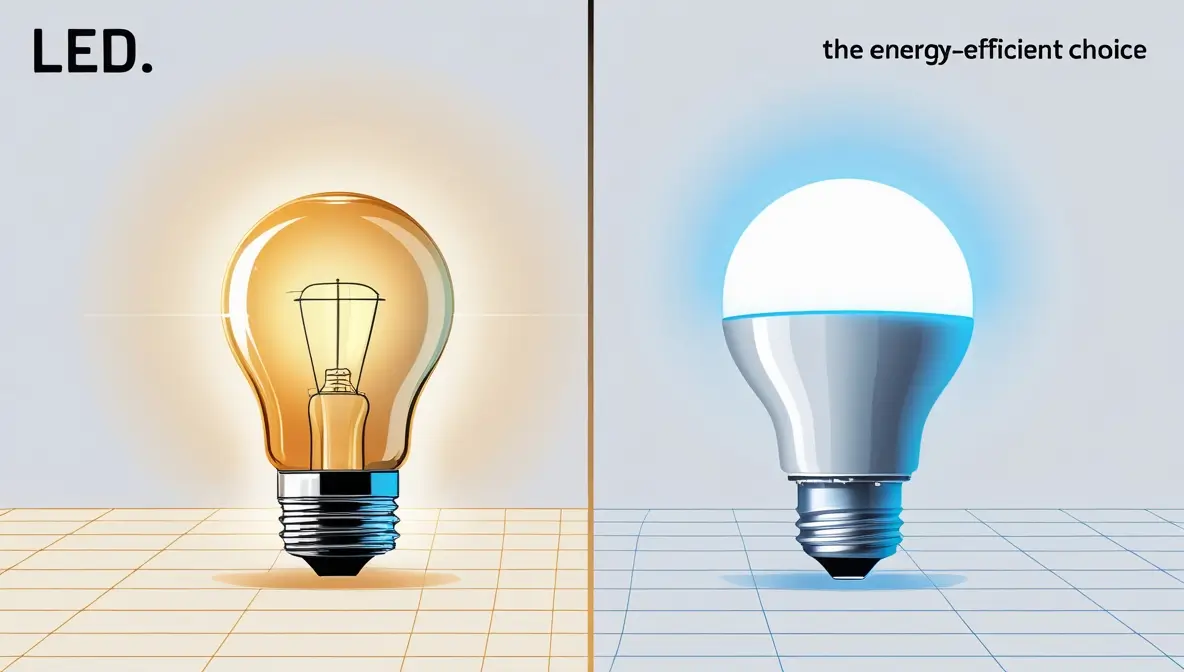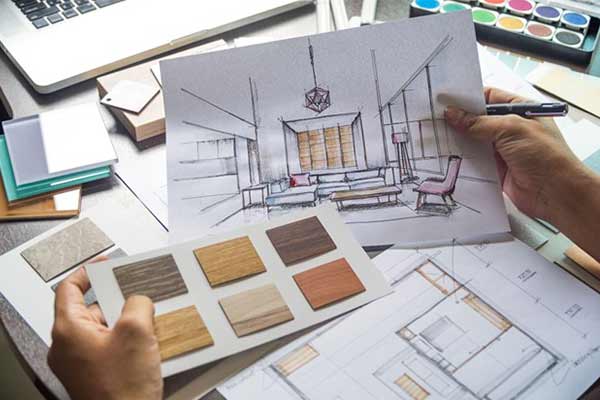Can You Replace Halogen Bulbs With LED Bulbs? Yes, you can replace halogen bulbs with LED bulbs. LED bulbs are energy-efficient and last longer.
They are also better for the environment. Switching to LED bulbs is a smart move. They consume less electricity, reducing your energy bills. LED bulbs also produce less heat, which makes them safer. They come in various shapes and sizes, fitting almost any fixture.
LEDs last much longer than halogen bulbs, saving you money in the long run. Plus, they are environmentally friendly. You will reduce your carbon footprint by making the switch. Many people are making this change and enjoying the benefits. So, should you replace your halogen bulbs with LED bulbs? Absolutely. It’s a simple change that makes a big difference.
Introduction To Led Bulbs
LED bulbs use Light Emitting Diodes to produce light. They are very energy efficient and last much longer than traditional bulbs. LED bulbs are available in many shapes and sizes. They can be used in various settings, from homes to offices. They do not contain harmful chemicals like mercury, making them safe for the environment. LED bulbs also produce less heat, reducing the risk of burns or fires.
LED technology started in the 1960s. The first LEDs were red and used in indicator lights. Over time, scientists created LEDs in different colors. In the 1990s, blue LEDs were invented. This led to the creation of white LED light. Now, LEDs are used in many applications, from TVs to streetlights. The technology continues to improve, making LEDs more efficient and affordable.

Credit: m.youtube.com
Comparing Halogen And Led Bulbs
Halogen bulbs use more electricity. LED bulbs use less energy. This helps save money on bills. LEDs are more efficient. They produce more light with less power. Halogens waste energy as heat. LEDs stay cooler. This makes them better for the environment.
Halogen bulbs do not last long. LEDs last much longer. Some LEDs can last over 20 years. Halogens might only last a year. This means you change bulbs less with LEDs. It saves time and money. LEDs are more reliable. They are a better long-term choice.
Benefits Of Led Bulbs
LED bulbs use less energy than halogen bulbs. This means lower electricity bills. They also last longer. You won’t need to buy new bulbs often. This saves money over time. The initial cost may be higher. But the savings are worth it. Think of it as an investment.
LED bulbs are better for the environment. They use less power. This means less pollution from power plants. They also last longer. Fewer bulbs end up in landfills. Less waste means a cleaner planet. Using LED bulbs helps reduce carbon footprint. It’s a small change with a big impact.
Energy Efficiency and Financial Savings
The biggest advantage of LED bulbs is their energy efficiency. Unlike the halogen bulbs, LED bulbs consume much less electrical energy and therefore, your electricity bills go down. A 60-watt halogen lightbulb can be replaced with an LED lightbulb that uses only about 10 watts of energy to produce the same amount of light. This is a 2-3 orders of magnitude drop in power that translates directly to dollars saved over time.
While LED bulbs do have a somewhat higher initial purchase price as compared to halogen, the savings on energy bill and the fact that they rarely need replacing more than offsets that cost in the long-run. Halogen bulbs last for a shorter period, like around 2,000 hours, while LEDs last much longer, typically between 12,000-25,000 hours. Lifespan this longer saves you money by needing less bulbs replacements, and also You do not need to change the bulbs so often.
Consider the long game, the initial cost may be higher, but LED lights pay for themselves in energy savings and a decreased frequency of replacing bulbs. Over the lifetime of an LED, the total cost is well below that of halogen bulbs.
Environmental Benefits
LED bulbs are better for the environment, too. Because they use much less energy than halogen bulbs, they help reduce the amount of electricity that needs to be generated by power plants. So, it reduces energy consumption and pollution effectively which results in increasing carbon footprint. Power plants that burn fossil fuels emit greenhouse gases and other pollutants, so choosing energy-efficient lighting, such as LEDs, counteracts climate change and the degradation of the environment.
In addition, LED bulbs last up to significantly longer. This reduces waste, as fewer LED bulbs are disposed of in landfills. And the long lifespan also means less raw materials are needed for production and distribution of new bulbs which also reduces environmental impact. It may seem like a small act of change, but by switching to LEDs you are helping the planet reduce waste and encouraging sustainability.
Using LED lighting is one of many simple steps you can take to reduce your carbon footprint and save the planet. It’s a small switch that has a big impact on the environment.
Brightness And Light Quality
Electricity is measured in watts, but light bulbs are measured in lumens, so it’s important to know how they compare when putting the two together. Halogen bulbs measure power consumption in watts while LEDs measure lumbers to show brightness. This is what enables LEDs to reach the same brightness as halogen bulbs while still requiring significantly less energy.
A 60-watt halogen bulb is usually about 800 lumens, while a 10-watt LED bulb is also 800 lumens of light. This means that LEDs are far more power efficient as they can produce the same amount of light power with a small fraction of the energy. Not only will this save you money — it will also help save the environment, since less energy will be needed to produce the same amount of light.
Color Temperature: Setting the Mood
One of the nice things about LED bulbs is that they can be different colors of light. LED color temperatures range widely and can greatly affect the ambiance and mood of the room. Here are some common color options:
- Warm White: The most popular color temperature for home lighting, this produces a warm, welcoming glow that closely resembles the old-school incandescent lighting. It is perfect for living rooms, bedrooms, and anywhere relaxation is important.
- Cool White: This color temperature gives more bright, energizing light, often small places like kitchens, bathrooms, and workspaces need focused lighting.
- Daylight White: A bright, crisp light that resembles natural sunlight and gives a cool and fresh atmosphere. This makes it a great choice for use in environments where clarity and visibility are important, such as offices or studying spaces.
Installation Process
Check if your current fixture can support LED bulbs. Some older fixtures might not be compatible. Look for markings on the fixture or manual.
Turn off the power before starting. Remove the old halogen bulb carefully.
Install the new LED bulb into the socket. Ensure it is secure. Turn on the power and test the bulb. Check for flickering or other issues.

Credit: ledhut.co.uk
Common Myths About Led Bulbs
Many think LEDs cost too much. LED bulbs may seem pricey at first. But they save money in the long run. They use less energy. They last much longer than halogen bulbs. So you buy them less often. This makes them cheaper over time.
Some say LEDs are not bright. This is not true. LED bulbs come in many brightness levels. You can find LEDs as bright as halogen bulbs. They also have better color options. You can choose warm or cool light. So, LEDs can be just as bright and more versatile.
Potential Drawbacks Of Led Bulbs
LED bulbs can be more expensive. The initial cost is higher than halogen bulbs. This can be a drawback for some people. But, LED bulbs save money over time. They last longer and use less electricity.
Some old fixtures may not work with LED bulbs. Compatibility issues can arise in certain cases. You might need adapters or new fixtures. This can add to the cost. Always check if your fixtures support LED bulbs before buying.
Future Of Lighting Technology
LED technology has seen many changes. New LEDs are very bright. They use less power. They last much longer. Old bulbs waste energy. LEDs save money and are better for the planet.
Smart lights are easy to use. You can control them with your phone. Some lights change color. Others can dim or brighten. Smart lights can also save energy. They make homes more fun and safe.

Credit: www.any-lamp.co.uk
Frequently Asked Questions
Can You Directly Replace Halogen Bulbs With Led?
Yes, you can directly replace halogen bulbs with LED bulbs. Ensure the LED bulb has the same fitting and voltage. LED bulbs are energy-efficient and provide better lighting.
Do Led Bulbs Last Longer Than Halogen Bulbs?
Yes, LED bulbs last significantly longer than halogen bulbs. LED bulbs can last up to 25,000 hours, while halogen bulbs typically last about 2,000 hours.
Are Led Bulbs More Energy-efficient Than Halogen Bulbs?
Yes, LED bulbs are more energy-efficient than halogen bulbs. LED bulbs use up to 80% less energy, resulting in lower electricity bills and a reduced carbon footprint.
Do Led Bulbs Produce Less Heat Than Halogen Bulbs?
Yes, LED bulbs produce significantly less heat than halogen bulbs. This makes them safer to use and reduces the risk of burns and fires.
Conclusion
LED bulbs offer many benefits over halogen bulbs. They use less energy. They last longer. LED bulbs also provide better light quality. Switching to LEDs can save you money. You can reduce your carbon footprint too. Installation is simple and straightforward.
LEDs come in various styles and brightness levels. Choose the right LED bulbs for your needs. Make the change today. Enjoy brighter, more efficient lighting.

My name is Mahi Uddin, and I’m a blog writer with over two years of experience specializing in creating engaging, informative content using AI tools. I contribute to InExDecor.com, where I share creative ideas and practical tips for transforming interior and exterior spaces into beautiful, functional environments. With a passion for storytelling and a knack for blending creativity with technology, I strive to craft blogs that not only inform but also inspire readers. When I’m not writing, you can find me exploring design trends or enjoying a good book with a cup of coffee.








